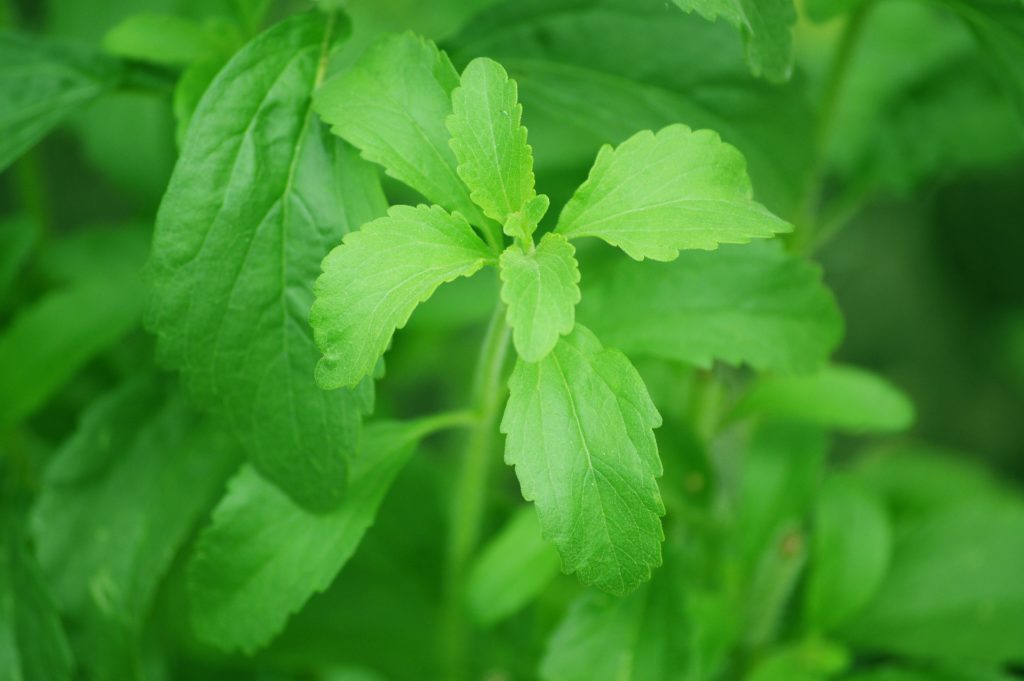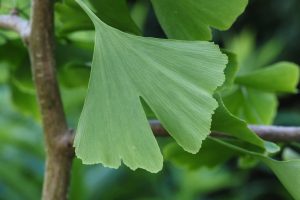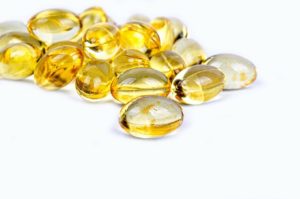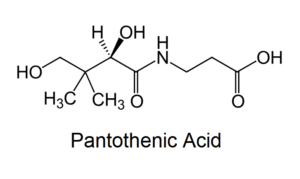Antioxidant and Antimicrobial Properties of Stevia Leaf

Stevia or Stevia rebaudiana is a plant generally known for its sweet taste. Extracts of stevia are often used as a natural sugar substitute with zero calories. From what we know so far, unlike artificial sweeteners, stevia appears to support health and actually lowers blood sugar.
Likely due to the amount of leaf waste from the extraction process for stevia as a sweetener, researchers have started to explore additional uses for stevia leaves. Due to a number of different compounds found in the leaves, stevia appears to have significant antioxidant and antimicrobial potential.
Antioxidant Potential of Stevia Leaf
Initial studies on stevia leaf describing the “remarkable” antioxidant potential of stevia extracts date back to 2006, although earlier studies also recognized the antioxidant activity of the plant (Gopalakrishnan 2006, Xi 1998). Studies have shown that the antioxidants in stevia leaf may help to prevent free radical damage (Ghanta 2007). The antioxidant potential appears to stem from the leaves’ phenolic content, similar to other herbs known for their antioxidant effects, like pine bark, grape seed and green tea (Shukla 2009). Phenols are chemicals that include a six-carbon ring with an attached hydroxy group (an oxygen and hydrogen).
Protecting the Liver and Kidneys
Animal studies have shown that the antioxidant potential of stevia is strong enough to protect the liver from carbon tetrachloride and lipopolysaccharide, two compounds used to study liver toxicity (Moselhy 2016, Latha 2017). Additional studies also suggest the liver protecting potential of stevia (Ramos-Tovar 2019). And beyond the liver, other research hints at kidney protecting properties, likely due to stevia’s antioxidant abilities (Elsaid 2019).
Protecting from Excess Blood Sugar
Excess consumption of fructose, found in large quantities in high-fructose corn syrup, can cause blood sugar problems and diabetes. Animal studies have also shown that consumption of fructose in larger quantities can damage the brain. This damage can be mitigated significantly by antioxidants. A study in high-fructose-fed rats found that stevia helped to reduce the brain damage caused by excess fructose in the diet (Chavushyan 2017). Other research also suggests that stevia may help protect from the negative effects caused by diabetes (Bayat 2020). Animal studies even suggest that stevia, due partly to its antioxidant properties, may help in treating male sexual dysfunction (Ghaheri 2018).
Other Protective Effects
And still other animal research shows potential of stevia for protecting against the development of ulcerative colitis, a form of inflammatory bowel disease (Mostafa 2020). There is even early evidence that its antioxidant effects, combined with other properties, may help to prevent or treat osteoarthritis (Wu 2022). An overall meta-analysis of the animal research found that stevia leaf extracts were able to restore normal antioxidant levels to between 65% and 85% of normal in all tissues tested when under free radical stress (Papaefthimiou 2023).
Antimicrobial Effects of Stevia Leaf
Beyond its antioxidant properties, stevia leaf extracts display antiviral, antifungal and antibacterial activity. While worthy of note, the findings do not imply that stevia can be taken orally as an effective antimicrobial for human use. Absorption issues often minimize the antimicrobial effects of plants and plant extracts in the human body. As such, the antimicrobial effects described below need to be confirmed with clinical trials to verify potential efficacy for treating different types of infectious conditions.
Antiviral Effects
Rotavirus is a common cause of diarrhea in children. In cell-culture studies, stevia has been shown to inhibit rotavirus replication (Takahashi 2001). The effect appears to be through stevia’s ability to block the virus from binding and entering into cells. Like other viruses, rotavirus needs to hijack different cellular functions to replicate.
Long sugar chains called polysaccharides found in stevia leaf have also been shown to display antiviral activity. Upon testing, stevia polysaccharides displayed antiviral activity against herpes simplex virus type 1 (Oliveira 2013). Additional research appears to confirm the findings with the authors suggesting that stevia could form the basis for an alternative treatment for herpes (Ceole 2020).
Antibacterial and Antifungal Effects

Studies on bacterial and fungal organisms have shown antimicrobial effects of stevia leaf extracts. A study from 2006 found water extracts to have minimal effects, whereas chemical-solvent extracts all showed activity against multiple bacteria and fungal organisms (Tadhani 2006). A similar study confirmed the findings, with water extracts having poor efficacy, yet most chemical-solvent extracts showing both antibacterial and antifungal properties (Jayaraman 2008). Different solvents separate out different chemical constituents from the leaf, leading to the differences in antimicrobial efficacy.
A separate study also confirmed antibacterial and antifungal activity of stevia extracts (Siddique 2014). The authors mention how stevia may have a role as a potential pharmaceutical or preservative based on its effects. Studies have even shown stevia extracts to be capable of helping to preserve food, including fatty fish paste (Ortiz-Viedma 2017) and fruit extracts (Barba 2014).
Conclusion
Beyond its use as a sweetener, stevia leaf appears to have potent antioxidant effects along with antimicrobial activity. Many of these effects are due to the constituents found in stevia leaf beyond those that produce stevia’s sweet taste. As such, most stevia-based sweeteners do not contain the full activity of stevia leaf and shouldn’t be expected to provide the antioxidant and antimicrobial effects outlined above. Even still, stevia may have a role beyond that of a general sweetener based on some of the latest findings.



